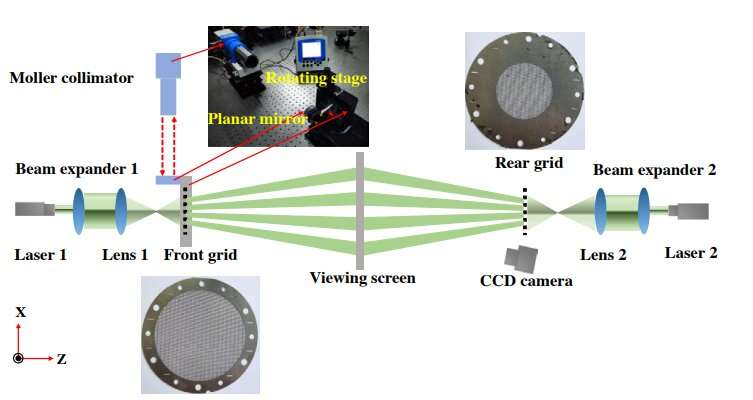Novel high-accuracy twist measurement for bi-grid modulation collimator

A research team led by Prof. Yang Jianfeng from the Xi'an Institute of Optics and Precision Mechanics (XIOPM) of the Chinese Academy of Sciences (CAS) recently proposed high-accuracy twist measurement based on the spherical wave Talbot effect for a bi-grid modulation collimator. Their up-to-date results were published in Applied Optics.
Bi-grid modulation collimators are important tools for imaging solar flares in hard X-rays. The imaging quality of the bi-grid collimator is sensitive to the relative twist between the rear grid and the front grid. Therefore, how to achieve high-accuracy twist measurement is an essential issue.
To address the above problem, Yang and his team members proposed a novel way to accurately measure twist for a bi-grid modulation collimator, which was based on the spherical wave talbot effect. The whole principle was disassembled into two parts, spherical wave talbot effect and twist angle measurement principle.
According to the experiments results, on the basis of the spherical wave talbot effect, the effectiveness of the proposed measurement was verified. In the future, it will be helpful in improving the imaging quality of the bi-grid collimator.
More information: Shengrun Liu et al, High-accuracy twist measurement based on the spherical wave Talbot effect for a bi-grid modulation collimator, Applied Optics (2021). DOI: 10.1364/AO.429980
Provided by Chinese Academy of Sciences





















